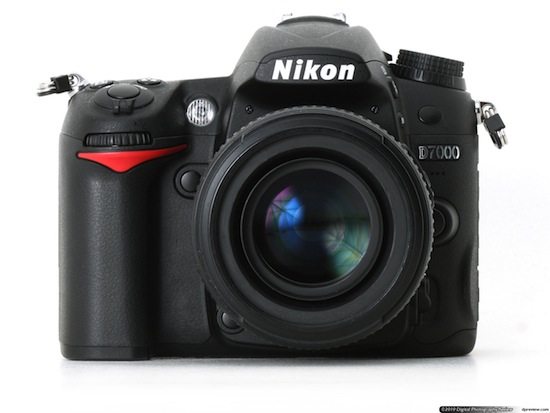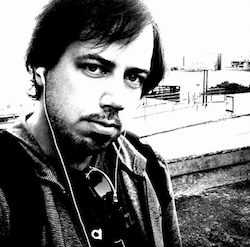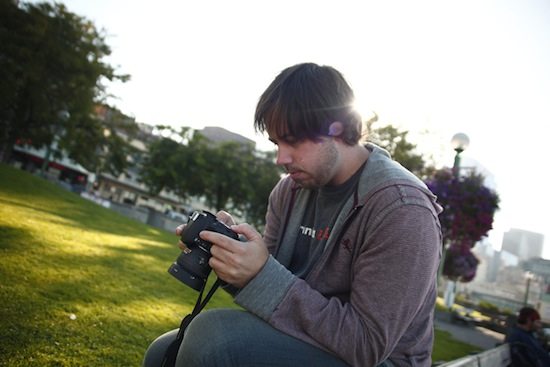Welcome to the second post in the “Finding Your Feet” series! The first post that dropped a couple of weeks ago touched on a lot of why photographers do what they do. This post is going to elaborate a little more into why certain cameras suit your particular style of photography and what you should know before buying your camera.

Choosing your camera is one of the most important decisions to make when you get started in Photography and ideally, a decision you only need to make a couple of times as it can get quite expensive. Every manufacturer of SLR cameras carries its own range of proprietary lenses that only work with that particular manufacturer’s camera bodies so this choice becomes even more daunting when you realise not only are you committing to a particular model of camera, but also committing to using only those lenses manufactured for that brand.
When looking at cameras, it’s critical to be cognisant of a couple of things:
- What do you NEED out of your camera?
- What do you WANT out of your camera?
All of the answers to these questions require some technical knowledge of the camera and some basic knowledge of photography. How many megapixels does it have? What size sensor does it have? What lenses from the manufacturer are compatible with it? If you’re new to the field odds are when you read the questions you’ve thrown your hands up in the air with a puzzled look on your face. You don’t need a salesman from a big-box-store telling you how much of a Nikon fan-boy he is and why the most recent release of their entry level SLR is the best thing since sliced bread. There’s no education going on there. What you want is a grasp on the basic concepts of the technical components of a camera and then use that knowledge to help you in your decision to buy the right camera for you.
So how do you know where to start? How do you know what camera is for you? Let’s start by defining a couple of key terms particularly related to the camera itself (and not the lenses you’ll use). I’m not going to hit every single nuance of these terms or all the technical components of the body itself, only the ones I feel largely impact which kind of camera body you should buy for your purposes.
Megapixels (MP)
The number of megapixels a camera has refers to the maximum resolution at which the camera can take photographs. Basically, this is the number of how many (millions of) pixels are in your image. It’s more complicated than this, but think of the more megapixels the better. There are situations where you don’t want more megapixels (coming later) but in general this will affect how large your images are. I shoot with a Nikon D700 which can capture images at 12MP or at a size of 4256 pixels wide x 2832 pixels high. Multiplying these two numbers give 12,052,992 pixels, or roughly 12 Megapixels. Every different camera model usually has different MP – definitely know how large an image you’ll need. It’s usually determined by what you want to print – if you are happy printing your images 5×7, 8×10, or even 11×14 12MP is plenty. Anything larger and you’ll start to need more MP.
ISO Range
ISO, or film speed, is a measure of the camera’s sensitivity to light. For film cameras this setting is fixed by the physical film used to expose photographs but in digital cameras we have the ability to change our ISO setting to suit the situation that we’re photographing. The larger the range of ISO the greater the camera’s ability to deal with differing amounts of light. The lower this number, the less sensitivity to light. The greater the number, the more sensitivity to light. They come in nice round numbers: 100, 200, 400, 800, 1600 and upward in this manner. This is crucial to understand if you’re going to be taking a lot of photographs indoors or in areas of low light as you’ll want to be taking images using a higher ISO setting to correctly expose your photographs. You’ll need a camera that can capture images at high ISO with low noise.
Sensor Size
The cameras sensor is the part of the camera that captures the image. It’s a square-ish (usually 4:3 or 3:2 ratio) piece of circuitry whose sole purpose is to convert the optical image seen by you and your camera into an electrical signal. In digital photography, they come in a couple of different “flavours”: a crop-body sensor, a full-frame sensor (similar to 35mm on film cameras), medium-format, and large-format. The crop-body sensor is a smaller sensor than that of a full-frame sensor. Full-frame sensors are equivalent to 35mm film, and the crop body sensors are smaller by a fixed multiplier known as the crop factor (usually around 1.5x or 1.6x in most modern crop-body cameras). A diagram always helps, here’s an image I took recently outside of Las Vegas to help demonstrate:
This image was taken with a Nikon D700, a full-frame body. As you can see, larger sensors like the full-frames capture much more of the scene around you. What you want to photograph will influence whether or not you want to purchase a full-frame or crop-body camera. That said, the sensor size is crucial to be aware of for another reason because this, combined with your ISO range and MP will affect how noisy your images are. You’ll notice noise in your images typically at higher ISO settings by random fluctuations in colour and light in parts of the image that end up looking like distracting speckles on your photgraph. Software exists to combat this, but in the spirit of getting it right in camera, choose your camera wisely! A camera’s sensor is a fixed size, and as cameras increase in MP, they’re essentially trying to fit more information into a smaller space. The effective size on the sensor per pixel is reduced to account for the increase in MP which can and does introduce noise (remember above where I said more MP isn’t always better? This is why!).
The full-frame / crop-body sensor will also impact which lenses are compatible with your camera in some cases, as well as changing the effective focal length. The focal length is altered directly by the crop-factor of the lens. For example, on a full-frame body using a lens capable of a focal length between 70mm and 200mm will not have it’s focal length altered, but the crop-body will be altered by a function of it’s crop factor. A 1.5x crop makes that lens effectively a 105mm – 300mm lens. One definite thing to consider – using a crop body you’ll always “appear closer” to your subject with your lenses than what they actually say they are.
Memory Cards
Typically cameras today capture images onto Compact Flash (CF) or Secure Digital (SD) cards. The cost of these varies with CF largely due to preferred processing speed. They’re also typically more expensive than SD cards. Check them out on Amazon and see for yourself. One more thing to consider to factor into the final price of your kit.
OK – now you know all this, how does it translate to your personal needs for a camera and your photography?
One of the first things you’ll realise with Photography is that it’s an expensive beast to tame. The gear that you’ll need to buy to start out could easily set you back a couple of thousand dollars and in today’s world that’s a large chunk of change to come up with. Your first kit will likely include a camera body, a couple of lenses, memory cards, and extra battery, a decent bag or backpack, maybe a flash and a tripod. That’s before we even talk about the gear required for studios. It’s really difficult to break ground here if you don’t understand exactly what you’re buying – you could end up wasting a lot of money and time in gear that’s not enough or too much for what you need. The bottom line here is thus – invest in your lenses. If you buy lenses for a particular brand of camera, they will more than likely be compatible with all or most of the line of cameras from that brand. Yes, once you’ve sank some decent change into lenses, it’s very difficult to convert from one brand to another – you’re not just replacing the body but ALL of your lenses too. It’s apples & oranges.
Notice the difference between the first two questions at the top of the article – what do you need versus what do you want out of your camera? I hear people say all the time that to take great photographs they need a digital SLR and that magically by putting this great piece of machinery in their hands amazing images will flow forth like white water rapids. Nothing could be further from the truth! If you’re just getting started buying a camera that is too advanced for you can be a bad thing – you’ll find yourself fumbling through the vast array of menu options, buttons, presets, and functions that you’ll get lost in the technology and forget about what you need to be doing to capture that great photo. By the time you’ve figured it out the moment has past and you’ll have missed your chance. Everyone wants the best value for money and latest & greatest camera, but there’s a reason there are cameras out there aimed at the pros and cameras aimed at beginners – you have different NEEDs. For beginners, there is such a thing as too much camera. You don’t want to start out with the top-of-the-line model even though your gear-lust may tell you otherwise.
When you’re photographing something, a camera should feel like it is a part of you. When you place it in your hand, it’s an extension of your arm leading back up to your shoulders, to your head, to your eyes and back into your brain. At the point where you’re fully comfortable shooting with your camera changing basic settings such as aperture, ISO, and shutter speed should be second nature to you, like breathing or blinking (this will come with time and practice like all good arts). That said, the key to buying isn’t just doing research and then buying online. How do you know if you’ll like how the camera operates if you haven’t run it through the ropes? Camera stores will be more than happy to let you try out the bodies first in-store. Try, try, and then try some more!
Above all the technical specs and the want for great gear, the most important thing is that the camera is easy for you to use!
I tried Canon, Sony, and Nikon before buying my D700 – I bought Nikon purely because it felt the most intuitive to me to use. You should definitely try them as many brands and models as you can and figure out which camera feels best in your hand and is the most intuitive for YOU. People with bigger hands don’t want to struggle with smaller camera bodies and the same goes for the converse – if you have small hands you may not be able to reach the buttons you need to reach. Figure out which camera is most comfortable and intuitive to you to use – remember you don’t want to be fumbling about. Nikon and Canon are the two largest and most popular brands of camera and they carry a large range of accessories and lenses. Finding an extra battery or some other part in a pinch is usually pretty easy. Sony, Pentax, Olympus are also big brand names but their range of lenses isn’t as big as Nikon’s or Canon’s.
If you’re just starting out, start out small with your camera and invest in lenses. Your kit lens plus a separate 50mm lens is a great way to start and won’t break the bank. Resale value on camera bodies isn’t that great but the lenses tend to really hold their value if you want to buy a nice telephoto or wide-angle lens. It’s never an issue to upgrade a body later on. You’ll know when the time is right to upgrade! Start out small and learn the basics of the camera and photography. The entry level body or above-entry level body is usually a great place to start as it minimises the dollars you invest, plus it makes it easier for you to learn as there’s a lot less going on with the camera that would be otherwise distracting.

It’s time to do some reading about which camera you want, and there’s no better place than online! There are some amazing online resources to help you in your decision to buy a camera. For example, Ken Rockwell’s site has some great reviews on camera bodies and lenses. Most everyone will have their own preference on where to look at reviews and technical specifications. In my opinion, one of the better sites is http://dpreview.com. They have a vast array of reviews and information covering all of the major manufacturers. Definitely check them out as well as the official sites of Nikon, Canon, Sony, Pentax, and Olympus too. When you’ve figured out what you want to buy, some great online vendors are of course Amazon, and B&H Photo/Video. There’s also KEH.com for some great second hand gear.
Thanks for reading! The next post in the series will drop in two weeks and will cover some of the basic camera settings, what they are, what they mean, when to adjust what and why. It’ll be a fun post!
–
![]()

Photo Credit: Jacob F. Lucas
Originally from Hobart, Australia, I’m a photographer currently living in Seattle, Washington. I enjoy photographing everything native to the pacific northwest and the surrounding areas.
My passion for photography has grown over many years. In early 2001 I was given my first digital camera by my parents. It was a modest device, but it did spark something within me that led me to where I am today. Something about capturing the world in front of me in a single frame gripped me. Then I moved to Seattle and it has led me down to photographic path I’m on (and loving!) today.
My images are an insight into the world as it’s seen through my eyes. In the end, what I’m mostly trying to capture is not just people or places… It’s the feeling. It’s what drives us. I have a keen interest in many post-processing techniques but HDR holds a special place in my photographer “tool bag” to help convey my story.
What do I enjoy photographing? Everything! I love it all, from portrait & landscapes to urban architecture and everywhere in between. The camera has come a long way since the days of yesteryear, but even if they were not comprised of the technology they are today, the reason they inspire me would endure: to show the people of this world just how truly amazing the planet we live in is. For me, it is all about capturing those incredible places & moments.
Company: jflphotography
Phone: 206-414-9505
Website: http://www.jflphotography.com
Twitter: @jflphotography
Facebook: http://www.facebook.com/jflphotography
Here’s how you can share your tips, techniques and tutorials on CurrentPhotographer.com
*The Current Photographer website contains links to our affiliate partners. Purchasing products and services through these links helps support our efforts to bring you the quality information you love and there’s no additional cost to you.



RT @TrevorCurrent: Looking to buy your first DSLR? Check out, Finding Your Feet: Choosing Your Camera https://currentphotographer.com/finding-y… #photog #togs
RT @TrevorCurrent: Looking to buy your first DSLR? Check out, Finding Your Feet: Choosing Your Camera https://currentphotographer.com/finding-y… #photog #togs
RT @TrevorCurrent: Looking to buy your first DSLR? Check out, Finding Your Feet: Choosing Your Camera https://currentphotographer.com/finding-y… #photog #togs
RT @TrevorCurrent: Looking to buy your first DSLR? Check out, Finding Your Feet: Choosing Your Camera https://currentphotographer.com/finding-y… #photog #togs
RT @TrevorCurrent: Looking to buy your first DSLR? Check out, Finding Your Feet: Choosing Your Camera https://currentphotographer.com/finding-y… #photog #togs
RT @TrevorCurrent: Looking to buy your first DSLR? Check out, Finding Your Feet: Choosing Your Camera https://currentphotographer.com/finding-y… #photog #togs
RT @TrevorCurrent: Looking to buy your first DSLR? Check out, Finding Your Feet: Choosing Your Camera https://currentphotographer.com/finding-y… #photog #togs